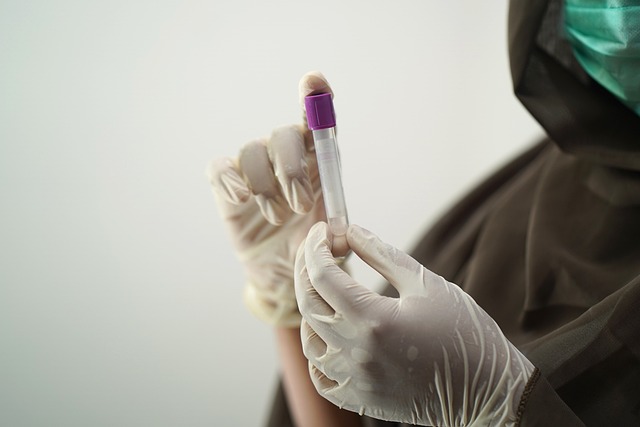Interpreting Red Blood Cell Protein Levels: What Routine Tests Reveal
Routine blood tests measure the protein content inside red blood cells to assess oxygen delivery and detect conditions such as anemia or iron imbalance. Understanding the numbers, terminology, and common follow-up steps helps you interpret bloodwork results and know when to seek further evaluation.

Routine blood tests commonly report the amount and behavior of the protein inside red blood cells, providing insight into oxygen transport, metabolic state, and potential disease. These initial results guide clinicians in diagnosing anemia, assessing iron handling, and determining if further hematology diagnostics or imaging are needed. This article explains what routine testing shows, what the numerical values mean, and why context—symptoms, other biomarkers, and clinical history—matters.
What do erythrocytes tell us about hemoglobin?
Erythrocytes, or red blood cells, are the cellular carriers of the oxygen-binding protein measured in routine bloodwork. Typical tests report hemoglobin concentration and hematocrit, which reflect how much of the blood’s volume is occupied by erythrocytes and how much oxygen-carrying protein is present. Low concentration often signals reduced oxygen delivery capacity; high concentration can indicate dehydration or conditions that raise red cell mass. Interpreting these values requires considering age, sex, altitude, and recent bleeding or hydration changes.
How does oxygen saturation and hypoxia relate to results?
Oxygen saturation and tissue hypoxia are related but distinct from hemoglobin concentration. Pulse oximetry estimates how much oxygen hemoglobin carries in arterial blood, while bloodwork measures how much hemoglobin is present. A normal hemoglobin with low saturation can still produce hypoxia symptoms, and conversely, low hemoglobin can cause hypoxia despite normal saturation readings. Clinicians use both sets of data—saturation trends, symptoms, and biomarkers—to assess whether oxygen delivery to tissues is sufficient.
Can testing detect anemia and iron issues?
Anemia is defined by reduced hemoglobin concentration or red cell mass and has many causes. Routine panels that include iron studies—serum iron, ferritin, transferrin saturation—help distinguish iron-deficiency anemia from anemia of chronic disease, hemolytic anemia, or conditions affecting red cell production. Ferritin provides a view of iron stores, while transferrin saturation indicates how much iron is available for red cell synthesis. Abnormal results typically prompt further diagnostics, including reticulocyte count, peripheral smear, or targeted testing for nutritional deficiencies and chronic inflammation.
Role of hematology diagnostics and bloodwork in evaluation
Hematology diagnostics extend beyond simple counts. A complete blood count (CBC) gives hemoglobin concentration, mean corpuscular volume (MCV), and related indices that hint at red cell size and production patterns. Bloodwork may include reticulocyte counts to assess marrow response and peripheral smears analyzed by microscopy or automated systems. These diagnostics help determine whether low hemoglobin results from reduced production, increased loss, or destruction. Contextual biomarkers such as C-reactive protein or liver function tests are often combined to clarify underlying causes.
Biomarkers, concentration, and spectroscopy testing methods
Laboratory methods vary: standard automated analyzers measure concentration and indices, while spectroscopy and point-of-care devices use light absorption properties of hemoglobin to estimate values rapidly. Spectroscopy underpins many modern hemoglobin and saturation tests; it is precise when calibrated but can be affected by abnormal hemoglobin variants or high bilirubin. Other biomarkers—like erythropoietin levels or markers of hemolysis—help characterize metabolic drivers of anemia and how the body is attempting to compensate. Accurate interpretation requires knowing the testing method and its limitations.
Transfusion considerations and effects on metabolism
Transfusion decisions rely on hemoglobin concentration but also clinical context such as ongoing bleeding, symptoms of hypoxia, and cardiopulmonary reserve. Transfused red cells change blood concentration quickly but may not immediately correct tissue-level hypoxia if metabolic or circulatory issues persist. Transfusion carries risks and is guided by protocols that balance benefits and potential complications; clinicians also consider iron supplementation or treatment of the underlying cause to restore native erythrocyte production and metabolic homeostasis.
This article is for informational purposes only and should not be considered medical advice. Please consult a qualified healthcare professional for personalized guidance and treatment.
Conclusion
Routine measurements of the protein within red blood cells yield valuable information about oxygen transport, erythrocyte health, and systemic metabolism. Laboratory indices such as hemoglobin concentration, hematocrit, MCV, and iron studies, combined with clinical signs and additional biomarkers, enable clinicians to differentiate causes of anemia, assess hypoxia risk, and plan appropriate diagnostics or interventions. Understanding the scope and limits of each test helps interpret results sensibly and aligns expectations for follow-up care.






